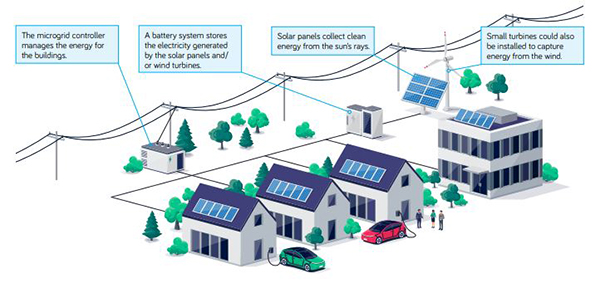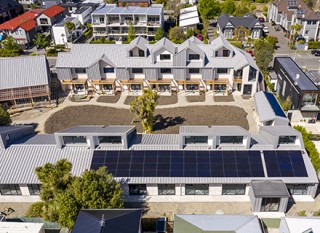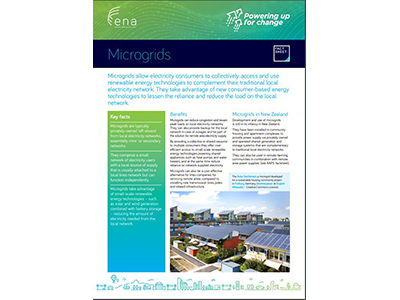Microgrids
30 June 2022
Microgrids allow electricity consumers to collectively access and use renewable energy technologies to complement their traditional local electricity network.
They take advantage of new consumer-based energy technologies to lessen the reliance and reduce the load on the local network.
Key facts
- Microgrids are typically privately-owned off-shoots from local electricity networks, essentially mini- or secondary networks.
- They comprise a small network of electricity users with a local source of supply that is usually attached to a local lines network but can function independently.
- Microgrids take advantage of small-scale renewable energy technologies such as solar and wind generation combined with battery storage – reducing the amount of electricity needed from the local network.

Benefits
Microgrids can reduce congestion and lessen peak loads on local electricity networks. They can also provide backup for the local network in case of outages and be part of the solution for remote area electricity supply.
By providing a collective or shared resource to multiple consumers they offer cost-efficient access to small-scale renewable energy technologies powering shared appliances such as heat pumps and water heaters, and at the same time reduce reliance on network-supplied electricity.
Microgrids can also be a cost-effective alternative for lines companies for servicing remote areas compared to installing new transmission lines, poles and related infrastructure.
Microgrids in New Zealand
Development and use of microgrids is still in its infancy in New Zealand.
They have been installed in community housing and apartment complexes to provide power supply via privately owned and operated shared generation and storage systems that are complementary to traditional local electricity networks.
They can also be used in remote farming communities in combination with remote area power supplies (see RAPS factsheet).
Examples of microgrids in New Zealand
Rowallan microgrid, Southland
Invercargill-based lines company PowerNet installed a microgrid in Rowallan in the far southwest of Southland to maintain electricity supply to a remote property. The property used approximately 6000kWh annually with potential for this to grow.
Coastal erosion had been washing out electricity poles and PowerNet determined the line was unsustainable. Compared to the cost of replacing the traditional overhead line, a microgrid proved to be the lowest cost solution.
Supplying two buildings, the microgrid included a solar panel, battery storage and a diesel generator as backup.
Community microgrid, Christchurch
Orion Energy distributes power to a microgrid installed at the 14-unit Peterborough community complex in
central Christchurch.
Owned by charitable trust, Ōtākaro Land Trust, Peterborough is a purpose-built, housing co-operative with a range of owner-occupied and rental accommodation from one-bedrooms to three-bedrooms built around a common garden courtyard.
The microgrid supplies the electricity needs of 14 households while drawing from the network the average load of one household.
The microgrid comprises:
- One small connection to the local network
- Self-consumed solar generation
- Shared energy storage systems
- Shared hot water system and underfloor heating powered by heat
pumps and boosted by solar panels - Shared laundries
- Passive solar design and energy efficiency.



